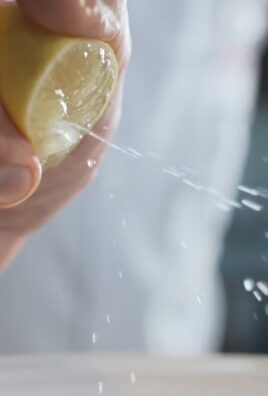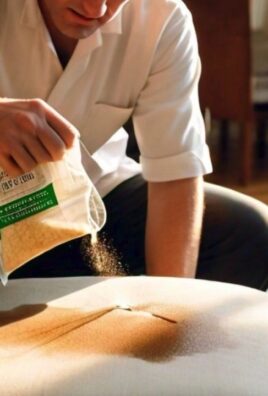Weekly cleaning hidden spots – are they the bane of your existence? Let’s be honest, we all have those neglected nooks and crannies in our homes that seem to accumulate dust bunnies and grime faster than we can say “spring cleaning.” But what if I told you that tackling these hidden spots weekly, with a few clever DIY tricks, could drastically improve your home’s overall cleanliness and even your well-being?
For centuries, cultures around the world have emphasized the importance of a clean home, not just for aesthetic reasons, but for its connection to mental clarity and physical health. Think of the ancient practice of Feng Shui, where decluttering and cleaning are essential for positive energy flow. While we might not be rearranging our furniture based on compass directions, the underlying principle remains: a clean space promotes a clear mind.
So, why focus on those hidden spots? Because they’re often breeding grounds for allergens, bacteria, and unpleasant odors. Ignoring them can lead to bigger cleaning headaches down the line, not to mention potentially impacting your health. This DIY article is your guide to conquering those forgotten corners. I’m going to share some simple, effective, and budget-friendly weekly cleaning hidden spots hacks that will transform your cleaning routine from overwhelming to manageable. Get ready to discover the secrets to a sparkling clean home, one hidden spot at a time!

Weekly Cleaning: Unveiling the Hidden Spots You’re Missing (and How to Conquer Them!)
Okay, let’s be honest. We all have those spots in our homes that we conveniently “forget” to clean during our regular routines. Dust bunnies under the bed? Check. Grime buildup around the faucet? Double-check. But fear not, my fellow cleaning enthusiasts! This guide is your secret weapon to tackling those neglected areas and achieving a truly sparkling clean home, week after week. I’m going to walk you through a comprehensive checklist and provide step-by-step instructions to make sure you don’t miss a single spot.
The Weekly Hidden Spots Cleaning Checklist:
* Kitchen:
* Inside the microwave (especially the roof!).
* Around the faucet and sink edges.
* Dishwasher filter.
* Coffee maker (descaling!).
* Garbage disposal.
* Underneath small appliances (toaster, blender, etc.).
* Cabinet hardware (knobs and pulls).
* Refrigerator door handles and edges.
* Bathroom:
* Showerhead.
* Toilet base and behind the toilet.
* Around the sink drain.
* Shower/tub grout.
* Bathroom exhaust fan cover.
* Toothbrush holder.
* Mirror edges.
* Living Areas & Bedrooms:
* Under furniture (beds, sofas, chairs).
* Baseboards.
* Light switches and door handles.
* Remote controls.
* Electronics screens (TV, computer, tablets).
* Houseplants (dust the leaves!).
* Window sills and frames.
* Laundry Room:
* Washing machine dispenser drawers.
* Behind the washer and dryer.
* Lint trap (dryer).
* Laundry baskets.
Tackling the Kitchen: Operation Sparkling Clean
The kitchen, being the heart of the home (and often the messiest!), requires special attention. Let’s dive into the nitty-gritty.
Microwave Magic:
1. Steam Clean: Fill a microwave-safe bowl with 1 cup of water and 2 tablespoons of white vinegar. Place it in the microwave and heat on high for 5 minutes. This will create steam that loosens the grime.
2. Wait and Wipe: Let the bowl sit in the microwave for another 5 minutes (without opening the door) to allow the steam to work its magic.
3. Wipe Away: Carefully remove the bowl (it will be hot!). Use a damp cloth or sponge to wipe down the inside of the microwave. The grime should come off easily. For stubborn spots, use a little baking soda paste.
4. Clean the Turntable: Remove the turntable and wash it with warm, soapy water.
Faucet and Sink Scrub:
1. Vinegar Power: Soak a paper towel in white vinegar and wrap it around the base of the faucet where grime tends to accumulate. Let it sit for 15-20 minutes.
2. Scrub and Rinse: Remove the paper towel and use an old toothbrush or a small scrub brush to scrub away the loosened grime. Rinse thoroughly with water.
3. Shine Time: Use a microfiber cloth to dry and polish the faucet and sink.
Dishwasher Deep Clean:
1. Filter Removal: Locate the dishwasher filter (usually at the bottom of the dishwasher) and remove it.
2. Scrub-a-Dub-Dub: Rinse the filter under warm water and use a brush to remove any food particles or debris.
3. Vinegar Bath: Place the clean filter back in the dishwasher. Pour 1 cup of white vinegar into a dishwasher-safe bowl and place it on the top rack.
4. Run a Cycle: Run the dishwasher on a hot cycle without any dishes. This will help to clean and deodorize the dishwasher.
Coffee Maker Refresh:
1. Vinegar Solution: Fill the coffee maker’s water reservoir with a mixture of equal parts white vinegar and water.
2. Brew and Repeat: Brew half of the solution, then turn off the coffee maker and let it sit for 30 minutes. This allows the vinegar to dissolve mineral buildup.
3. Finish the Brew: Finish brewing the remaining solution.
4. Rinse Thoroughly: Run two full cycles with fresh water to rinse away any remaining vinegar.
Garbage Disposal Goodness:
1. Ice and Citrus: Toss a handful of ice cubes and a few citrus peels (lemon, lime, or orange) into the garbage disposal.
2. Run the Disposal: Turn on the cold water and run the garbage disposal until the ice and citrus are completely ground up. This helps to clean and freshen the disposal.
3. Baking Soda Boost: Pour 1/2 cup of baking soda down the disposal, followed by 1 cup of white vinegar. Let it fizz for 5-10 minutes.
4. Flush with Water: Turn on the cold water and run the disposal for another minute to flush away any remaining residue.
Appliance Undercarriage Cleaning:
1. Unplug and Protect: Unplug the appliance and protect the surrounding area with a towel or newspaper.
2. Vacuum Power: Use a vacuum cleaner with a hose attachment to remove dust and crumbs from underneath the appliance.
3. Wipe Down: Use a damp cloth to wipe down the surface underneath the appliance.
Cabinet Hardware Hygiene:
1. Soapy Soak: Remove the cabinet knobs and pulls and soak them in a bowl of warm, soapy water for 10-15 minutes.
2. Scrub and Shine: Use a brush or sponge to scrub away any grime or buildup.
3. Rinse and Dry: Rinse the hardware thoroughly with water and dry them with a clean cloth.
4. Reattach: Reattach the clean hardware to the cabinets.
Refrigerator Handle Help:
1. Disinfectant Wipe: Use a disinfectant wipe to clean the refrigerator door handles and edges.
2. Focus on Crevices: Pay special attention to the crevices and areas where dirt and grime tend to accumulate.
3. Dry Thoroughly: Dry the handles and edges with a clean cloth.
Bathroom Bliss: Eradicating Grime and Germs
The bathroom is another area that requires regular attention to prevent the buildup of grime, mold, and mildew.
Showerhead Sparkle:
1. Vinegar Bag: Fill a plastic bag with white vinegar and secure it around the showerhead with a rubber band or twist tie, ensuring the showerhead is submerged in the vinegar.
2. Soak Overnight: Let the showerhead soak overnight.
3. Remove and Rinse: Remove the bag and run the shower for a few minutes to flush out any remaining vinegar and loosened mineral deposits.
4. Scrub Stubborn Spots: If there are any stubborn spots, use an old toothbrush to scrub them away.
Toilet Base Triumph:
1. Disinfectant Spray: Spray the base of the toilet and the area behind the toilet with a disinfectant cleaner.
2. Wipe Down: Use a cloth or sponge to wipe down the entire area, paying special attention to the crevices and hard-to-reach spots.
3. Dry Thoroughly: Dry the area with a clean cloth.
Sink Drain Delight:
1. Baking Soda and Vinegar: Pour 1/2 cup of baking soda down the drain, followed by 1 cup of white vinegar.
2. Fizzing Action: Let the mixture fizz for 15-20 minutes.
3. Flush with Hot Water: Flush the drain with hot water for several minutes to clear away any buildup.
Grout Glory:
1. Baking Soda Paste: Mix baking soda with a little water to create a paste.
2. Apply and Scrub: Apply the paste to the grout lines and use an old toothbrush or grout brush to scrub away any mold or mildew.
3. Rinse Thoroughly: Rinse the grout lines with water.
4. Vinegar Finish (Optional): For stubborn stains, spray the grout lines with white vinegar after rinsing and let it sit for a few minutes before wiping it away.
Exhaust Fan Excellence:
1. Power Off: Turn off the bathroom exhaust fan.
2. Remove Cover: Carefully remove the exhaust fan cover (refer to the manufacturer’s instructions if needed).
3. Vacuum Dust: Use a vacuum cleaner with a brush attachment to remove dust and debris from the fan blades and the inside of the fan housing.
4. Wash

Conclusion
So, there you have it! Mastering these simple yet effective DIY tricks for tackling those weekly cleaning hidden spots is not just about achieving a cleaner home; it’s about reclaiming your time, reducing stress, and creating a healthier living environment. We’ve explored how to conquer those often-overlooked areas, from the depths of your refrigerator to the dusty corners behind furniture, and even the grime that accumulates in your washing machine.
Why is this a must-try? Because these aren’t just quick fixes; they’re sustainable habits that prevent the build-up of stubborn dirt and grime, making your regular cleaning routine significantly easier. Imagine spending less time scrubbing and more time enjoying your sparkling clean home. That’s the power of proactive cleaning!
But don’t stop there! Feel free to experiment and adapt these techniques to suit your specific needs and preferences. For instance, if you’re sensitive to strong smells, try using diluted vinegar instead of commercial cleaners for your washing machine. Or, if you have pets, consider using a pet-safe enzymatic cleaner for those hard-to-reach areas where pet hair and dander tend to accumulate. You can also add a few drops of your favorite essential oil to your cleaning solutions for a refreshing scent boost. Lavender, lemon, and eucalyptus are all excellent choices.
Another variation to consider is using microfiber cloths instead of paper towels. Microfiber cloths are not only more effective at trapping dirt and dust, but they’re also reusable and eco-friendly. Simply toss them in the washing machine after each use, and they’re ready to go again.
Don’t underestimate the power of consistency. Incorporating these DIY tricks into your weekly cleaning routine will make a world of difference in the long run. It’s like investing in your home’s health and well-being.
We’re confident that these tips will transform your cleaning routine and help you achieve a cleaner, healthier, and happier home. Now, it’s your turn! We encourage you to try these DIY tricks and see the results for yourself. And most importantly, we want to hear about your experience! Share your tips, tricks, and success stories in the comments below. Let’s create a community of clean-home enthusiasts who are passionate about making their living spaces shine.
Remember, a clean home is a happy home, and with these DIY tricks, you’re well on your way to achieving just that. Happy cleaning!
Frequently Asked Questions (FAQ)
1. How often should I be cleaning these hidden spots?
The frequency depends on your lifestyle and the amount of traffic these areas receive. However, as the article suggests, a weekly cleaning of these hidden spots is ideal for maintaining a consistently clean home and preventing the build-up of stubborn dirt and grime. This weekly routine will make your overall cleaning process much easier and more manageable. For high-traffic areas or homes with pets, you might consider cleaning certain spots more frequently, such as vacuuming under furniture or wiping down baseboards.
2. What are the best cleaning solutions to use for these DIY tricks?
The best cleaning solutions often depend on the specific area you’re cleaning and the type of grime you’re dealing with. For general cleaning, a mixture of warm water and dish soap is often effective. For tougher stains or grime, you can use a solution of vinegar and water. Baking soda is also a great natural cleaner and deodorizer, especially for areas like the refrigerator or washing machine. Avoid using harsh chemicals or abrasive cleaners, as these can damage surfaces and pose health risks. Always test cleaning solutions in an inconspicuous area first to ensure they don’t cause discoloration or damage.
3. Are these DIY cleaning tricks safe for all surfaces?
While most of these DIY cleaning tricks are generally safe, it’s always a good idea to exercise caution and test solutions in an inconspicuous area first. For delicate surfaces like wood furniture or natural stone, avoid using harsh chemicals or abrasive cleaners. Instead, opt for gentle cleaning solutions specifically designed for these materials. Always read the manufacturer’s instructions for your furniture and appliances to ensure you’re using the appropriate cleaning methods.
4. What if I don’t have time for a full weekly cleaning of these hidden spots?
If you’re short on time, try breaking down the cleaning tasks into smaller, more manageable chunks. For example, you could focus on cleaning the refrigerator one day, the washing machine another day, and the areas under furniture on a third day. Even spending just 15-20 minutes each day focusing on a specific hidden spot can make a big difference in the long run. The key is to be consistent and make cleaning these areas a regular part of your routine.
5. How can I prevent these hidden spots from getting dirty in the first place?
Prevention is always better than cure! There are several things you can do to prevent these hidden spots from getting dirty in the first place. Use doormats to trap dirt and debris before they enter your home. Regularly vacuum or sweep floors to prevent dust and dirt from accumulating under furniture. Wipe up spills immediately to prevent stains from setting in. And consider using furniture protectors or covers to shield your furniture from dirt and grime.
6. What tools do I need for these DIY cleaning tricks?
You don’t need a lot of fancy equipment to tackle these hidden spots. Some essential tools include microfiber cloths, a vacuum cleaner with attachments, a scrub brush, a spray bottle, and a bucket. You might also find a long-handled duster or a crevice tool helpful for reaching those hard-to-reach areas.
7. Can I use essential oils in my cleaning solutions?
Yes, you can definitely add essential oils to your cleaning solutions for a refreshing scent boost and added cleaning benefits. Some popular essential oils for cleaning include lavender, lemon, tea tree, and eucalyptus. However, it’s important to use essential oils safely and in moderation. Always dilute essential oils with water or a carrier oil before using them on surfaces. And avoid using essential oils on delicate surfaces or in areas where they might come into contact with food.
8. How do I clean behind large appliances like the refrigerator or washing machine?
Cleaning behind large appliances can be challenging, but it’s important to do it regularly to prevent the build-up of dust, dirt, and mold. Start by unplugging the appliance and pulling it away from the wall as much as possible. Use a vacuum cleaner with a hose attachment to remove any loose dust and debris. Then, use a damp cloth or sponge to wipe down the walls and floors behind the appliance. You can also use a long-handled duster or a crevice tool to reach those hard-to-reach areas.
9. What’s the best way to clean the inside of my washing machine?
Cleaning the inside of your washing machine is essential for preventing the build-up of mold, mildew, and detergent residue. There are several ways to clean your washing machine, but one of the most effective methods is to run an empty cycle with hot water and a cup of white vinegar. You can also add a half-cup of baking soda to the drum for added cleaning power. For front-loading washing machines, be sure to clean the rubber gasket around the door to remove any mold or mildew.
10. How do I get rid of stubborn stains in these hidden spots?
For stubborn stains, you might need to use a more targeted approach. For example, for grease stains, you can try using a paste of baking soda and water. For water stains, you can try using a solution of vinegar and water. And for mold or mildew stains, you can try using a solution of bleach and water. Always test cleaning solutions in an inconspicuous area first to ensure they don’t cause discoloration or damage. And be sure to wear gloves and eye protection when working with bleach or other harsh chemicals. Remember that consistent weekly cleaning will prevent stains from becoming stubborn in the first place.





Leave a Comment